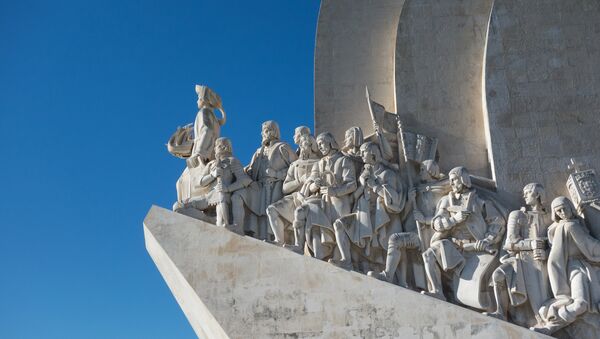The Portuguese explorer and his armada established the "Carreira da India" sea route to India on his first voyage to India in 1497-99, a feat which forged the first sea route between Europe and Asia.
On his second voyage to India in 1502-1503, the Esmeralda and the Sao Pedro were the leading vessels of a five-ship squadron, the fourth Portuguese fleet to explore the Indian Ocean.
Commanded by da Gama's maternal uncles Vicente and Brás Sodré, it is believed they were left behind to disrupt maritime trade between India and the Red Sea and were sunk by a storm off the north-eastern coast of Al Hallaniyah Island, Oman.
"Our research thereby benefited from a rich and extensive narrative of da Gama's 1502–1503 voyage to India, which also included the violent warfare and piracy conducted by the independent Sodre squadron and the tragic demise of the Esmeralda and Sao Pedro in a violent storm."
The best object proving Portuguese origin of Vasco da Gama wreck — Royal Coat of Arms & Esfera Armilar of Dom Manuel pic.twitter.com/bPSsToQNGR
— David Mearns (@davidlmearns) 15 марта 2016 г.
The wreck site was first discovered by UK-based shipwreck recovery company Blue Water Recoveries in 1998, and was excavated between 2013 and 2015 in partnership with the Oman Ministry of Heritage and Culture.
The ship's bell is believed to be the oldest example ever recovered and bears the letter M and the number 498, which researchers believe signifies the date 1498.




